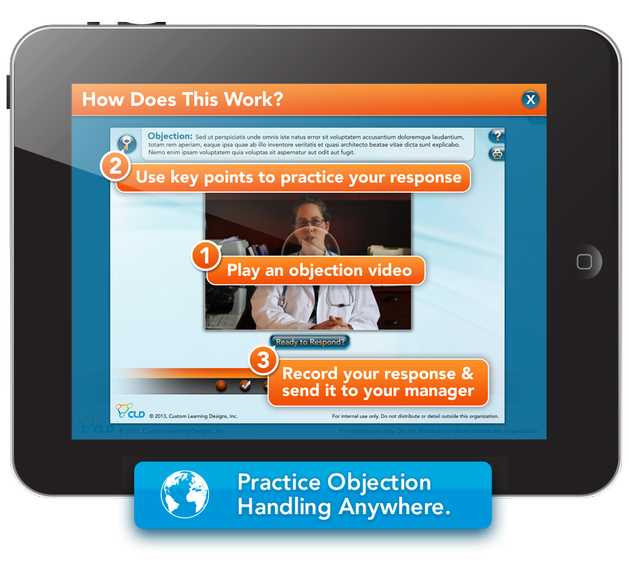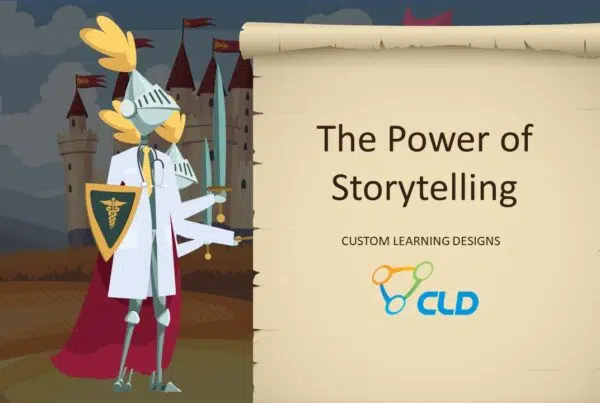How Participative Learning Can Benefit Pharma Sales Training
This type of participatory learning makes sense for pharma sales training as well, because real-world interactions and problem-solving are called for on the job. Instructors can make brief video cues of the types of customer interactions trainees are expected to face, and trainees can role-play those very situations. Classroom training may also involve making videos of the student-mock customer interactions for future reference.
Video in the training room is nothing new, but until recently it has been used in mostly one direction: imparting information to learners. Today technology makes it easy and affordable for role-play exercises themselves to be recorded. Instructors may wish to record outstanding mock interactions to demonstrate to other trainees as well.
Characteristics of Consistent Top Performers
Anyone who wants to be a sales professional must bring product knowledge, customer understanding, business sense, and consultative insight to the table. The ones who excel in sales are the ones who learn obsessively, who are relentless in practice, and who are willing to collaborate to solve problems. These people know the importance of learning and know that they’ll never be finished learning.
They’re also focused, but are willing to learn from a variety of media, including books, blogs, videos, podcasts – wherever they can find valuable information. An outstanding sales rep also recognizes that no one has all the answers, and that collaboration is often necessary to solve problems, so they ask questions, follow their curiosity, and are actively engaged in learning. Offering training programs that feed this hunger for information and trying things out only makes sense.
Trainees in any field must be prepared to make mistakes, and they must develop strategies to adjust quickly when mistakes happen. An active, participatory learning environment, where students are encouraged to participate and fail in a safe environment does far more to solidify skills and knowledge than expecting them to passively absorb everything they need.
Your trainees all have potential for better performance, but they have to be willing to continue learning, continue practicing, and seizing opportunities to put skills to work. There’s not only a learning curve, but also a “forgetting curve,” and learning techniques that include active participation help students not only make, but retain skills so they can put them to work in the real world.
Any coach, athletic or otherwise, will tell you that mentally learning a skill or technique doesn’t mean much if you don’t actually put it into practice to get better at it. Effective learning is much more than passively absorbing information. People need to try out, practice, and demonstrate their skills in a safe learning environment to be able to put them to use in real life situations.
Sales trainers are making use of advances in learning theory and techniques that successful coaches have long used to help trainees solidify skills, develop confidence, and get better results in the field. Of course, a competent and committed trainer is necessary, but participatory learning is mostly focused on the learner. It requires extra effort on everyone’s part, but it means skills are less likely to be forgotten, and trainees will have more confidence the first time they put their new skills to use on the job.
Active Learning Helps Solidify Skills
A study of students pursuing bachelors’ degrees in physical education and athletic training at the University of Texas at Arlington found that active learning strategies improved students’ critical thinking abilities and improved their academic grades. Student participants were pre-service teachers, and their learning for the study involved “problematizing” teaching situations, coming up with solutions, and trying out those solutions.
The strategic learning interventions used included a number of instructional strategies designed to promote critical thinking and problem-solving skills related to their service-learning experiences. Role-play, case studies, and small group projects are examples of learning methods used. Strategies were chosen to engage students intellectually, verbally, and physically, with the goal of challenging students to take risks, fail safely, and develop creative alternative solutions.





